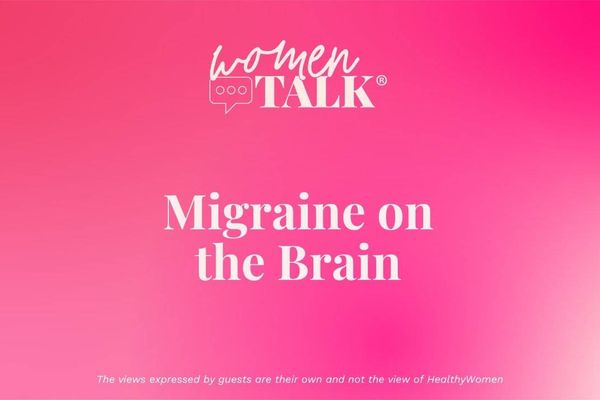Patients go to hospitals to heal, but for our patients with migraines, they may be places full of triggers instead. Migraines can be caused by internal factors like stress, fatigue and hormones or external factors like noise, lighting or other disruptions. Thankfully, we're seeing new trends in hospital design that are leading to changes that increase healing environments.
How can health care providers help people prone to migraines avoid triggers when they visit hospitals or health care provider offices?
First, let's talk about how “normal” everyday exposures actually don't feel normal to people experiencing migraines. They can be particularly sensitive to lights, sounds and smells, both before and during a migraine attack.
It's fairly well-known that people experiencing an active migraine attack prefer a dark room and one of the reasons for that is photophobia. This is not fear of light but a symptom where the patient experiences pain due to light exposure, including sunlight, fluorescent lights or electronic screens. It is so common in migraine that it's often used in making a diagnosis, and between 80 and 90 percent of people with migraines have reported experiencing it.
Moving away from migraine-triggering overhead fluorescent tube lighting to task lighting, lower ceilings with recessed lighting installed and less glaring LEDs, can help with light sensitivity. The trend toward building design with more natural light is a positive one, which supports patient's healing but also provides softer light depending on the time of day and the amount entering the room. On the other hand, care must be taken to cut down on glare, so blinds or adjustable window coverings are recommended. Flickering light can be a trigger for migraines, so the ability to block out or avoid light sources is useful as well.
In addition, phonophobia, or being sensitive to loud noises, often comes along with light sensitivity. Patients may manage this by wearing noise cancelling headphones or earplugs, or using white noise machines to insulate their space. But hospitals are taking steps to manage noise as well.
One trend in hospital design right now is to use “pink noise” (which is a different frequency than white noise) to prevent acoustic disturbances like monitors and alarms and also to protect confidential health conversations from being overheard. Pink noise, which might sound like a fan, a steady rainfall or the wind outside, can help promote restful sleep.
Managing noise in hospitals has risen as a priority because it improves patient satisfaction scores as well. Turning down alarms, ringers, paging systems can help keep interruptive noise to a minimum, while pink noise prevents there from being complete silence. Noise also increases blood pressure and can interfere with pain management, a real concern for people experiencing a painful migraine already.
A less common trigger is osmophobia, or a sensitivity to smell, that can be produced in response to chemicals, smoke or artificial fragrances. A shift towards lower strength (but still effective) cleaning products, and better air quality in interior spaces is helpful with this sensitivity.
While patients have some control over their home environments, we as clinicians should try to be good stewards in the environments we create. That means educating staff about changes to the environment, including things like chemicals used in cleaning, or not asking patients about why they may be wearing sunglasses indoors (these filter out red and blue light, which are the colors that are the most stimulating for people with migraines.)
Education for staff might include the different types of triggers for migraines, as well as how to manage those symptoms while patients are visiting their health care provider or admitted for a hospital stay. Promote a culture of quiet with the staff, and have adjustable lighting in each area. Empower staff to identify noises or lighting issues and act to fix them, and coordinate with maintenance staff about when there might be repair work that will create a lot of noise.
Experiencing migraines can also be an additional challenge layered upon another reason for a hospital stay. Intersecting health issues, in addition to stress, might need some additional coordination pre- and post-hospital stay. Working to manage stress, encouraging restful sleep and educating patients about how they can deal with a new environment may help.
The bottom line: we need to be aware of the environments we ask our patients to heal in, and we know that less stimulation is better for our patients dealing with migraines. Let's do more, and raise awareness that we have a number of clinical environments that need improvement and patients are suffering in the meantime.
It doesn't mean tearing down and rebuilding new hospitals, but it does mean thinking hard about design that helps patients heal and doesn't add additional stress and stimulation for people struggling to avoid the impact of migraines.
This resource was created with support from the Allergan Foundation.
- Most People Who Experience Migraine Are Women: Here’s What You Need to Know ›
- How to Know If You’re Experiencing Migraine ›
- When It's More Than Just a Bad Headache ›
- Can Migraine Attacks Be Triggered? - HealthyWomen ›
- Fact Facts: Everything You Need to Know About Migraine Disease - HealthyWomen ›
- Questions and Answers About Migraine Disease - HealthyWomen ›






